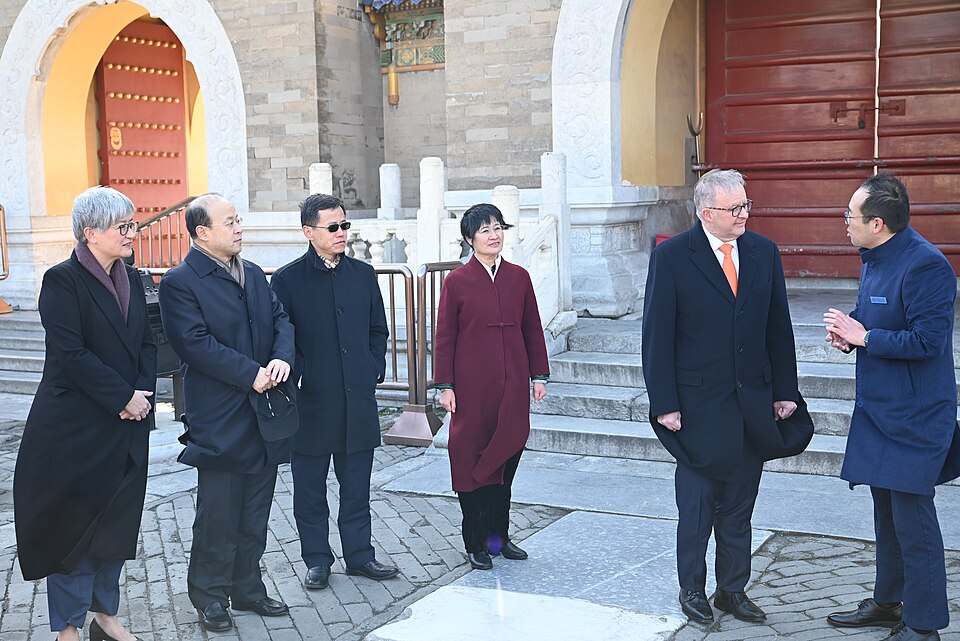US Defense Demands Complicate Albanese's Diplomatic Visit to China

In a politically charged atmosphere, Australian Prime Minister Anthony Albanese embarks on a significant diplomatic visit to China, facing complex challenges posed by U.S. defense demands. The visit, which commences amid heightened tensions regarding Taiwan, raises questions about Australia's military commitments in the region.
The geopolitical landscape has shifted dramatically, with the Chinese government extending an olive branch to Australia, while the United States, under the Trump administration, seeks clarity on Australia’s military stance in the event of a Chinese conflict with Taiwan. This juxtaposition highlights the intricacies of Australia’s foreign relations, as it navigates between its largest trading partner, China, and its traditional ally, the United States.
According to Elbridge Colby, U.S. Defense Undersecretary, there is an urgent need for allies to express their commitment to military involvement in potential conflicts concerning Taiwan (Financial Times, June 2025). This pressure comes at a time when U.S. foreign policy appears increasingly erratic, raising concerns about its reliability as an ally. Recent decisions, such as the suspension of arms deliveries to Ukraine, reflect a chaotic approach to international relations, which complicates Australia’s position (Reuters, July 2025).
Acting Defence Minister Pat Conroy emphasized Australia’s longstanding policy that military decisions will be made by the elected government of the day, asserting that commitments cannot be made in advance of a conflict (ABC News, July 2025). Conroy stated, "The sole power to commit Australia to war or to allow our territory to be used for a conflict is the elected government of the day. That is our position" (ABC News, July 2025). This cautious approach underscores Australia’s need to balance its commitments under the trilateral AUKUS security pact with the U.S. and the United Kingdom against the backdrop of rising tensions in the Indo-Pacific region.
As Albanese visits China, the timing coincides with the commencement of the Talisman Sabre military exercises, which are a biennial showcase of U.S.-Australia defense cooperation. The exercises, however, take place under the looming shadow of Chinese surveillance and concerns over military transparency (Department of Defence, July 2025). Conroy acknowledged that it is "unusual" for China not to monitor these exercises, indicating a level of military scrutiny that Australia must contend with (ABC News, July 2025).
The current diplomatic landscape presents a paradox: while China seeks to strengthen economic ties with Australia, the U.S. demands clear military alignments in the face of potential aggression from Beijing. This duality creates a precarious balancing act for Albanese, who has to elevate Australia’s economic relationship with China while maintaining a firm stance on regional security issues.
Economist Justin Wolfers, based in the U.S., remarked on the diminishing concern among U.S. policymakers regarding Australia’s geopolitical stability, suggesting that Australia’s interests may not be prioritized in Washington’s strategic calculus (The Guardian, July 2025). This sentiment raises alarms about the future of Australian-American relations, especially if the U.S. continues to exhibit unpredictability in its foreign policy decisions.
The implications of these dynamics are far-reaching. As Australia reassesses its defense postures and engagements, the stakes involved in its relationships with both China and the United States could redefine the nation’s foreign policy trajectory. The interplay of economic interests, military commitments, and regional stability will be critical in shaping Australia’s role in an increasingly multipolar world.
As the Albanese administration navigates these complex waters, the outcomes of this visit and the subsequent military exercises could set the tone for Australia’s defense strategies and diplomatic engagements in the years to come.
Advertisement
Tags
Advertisement




